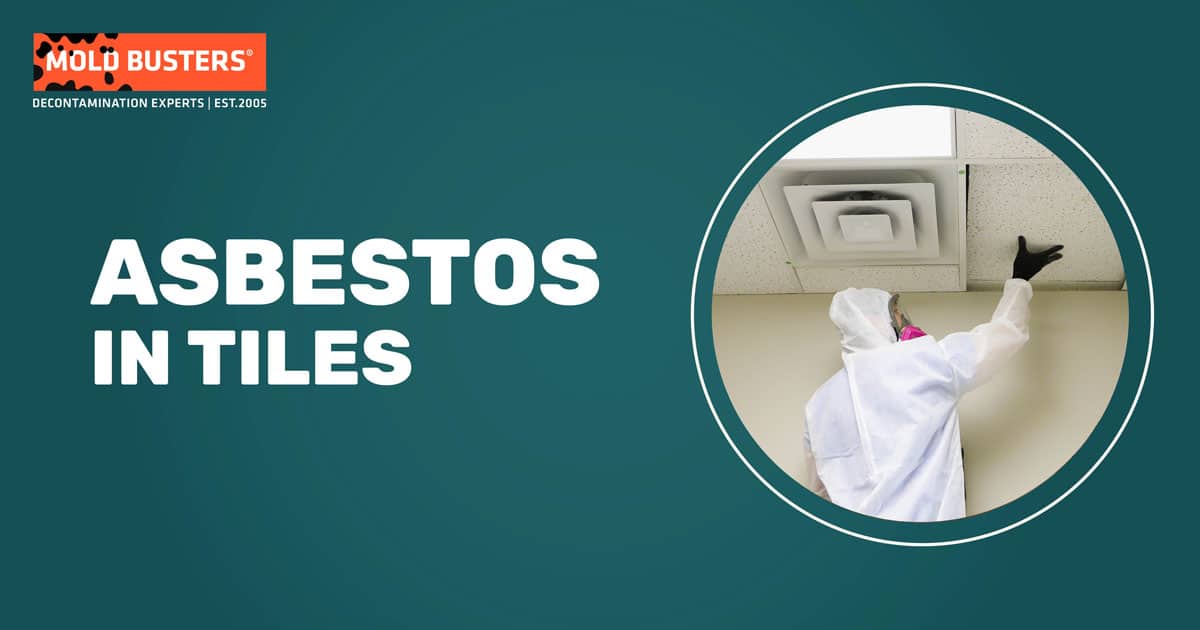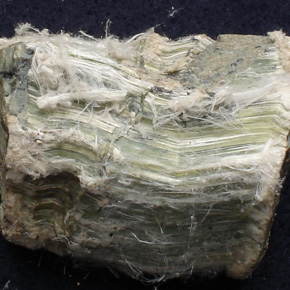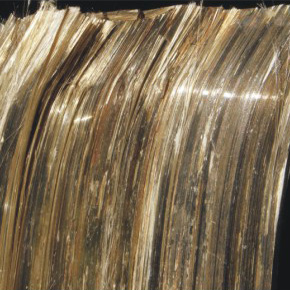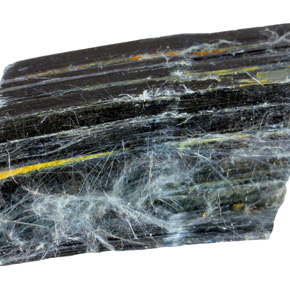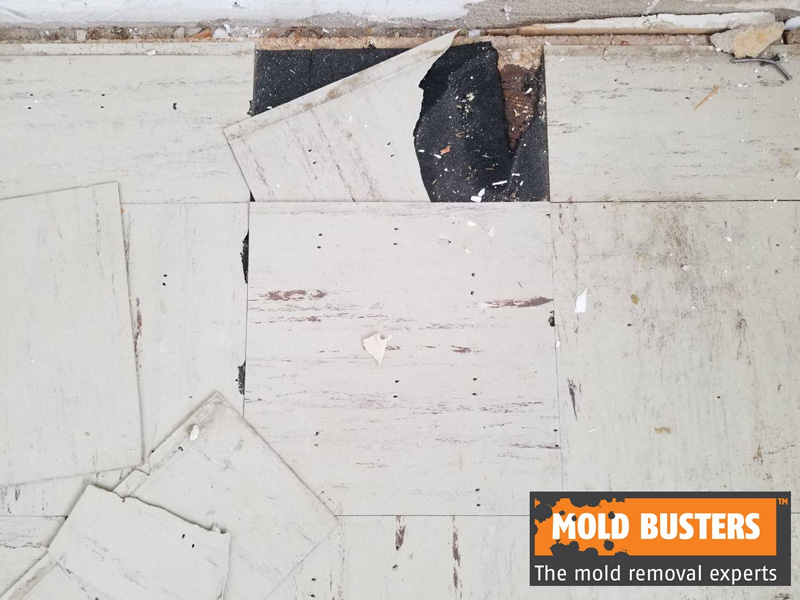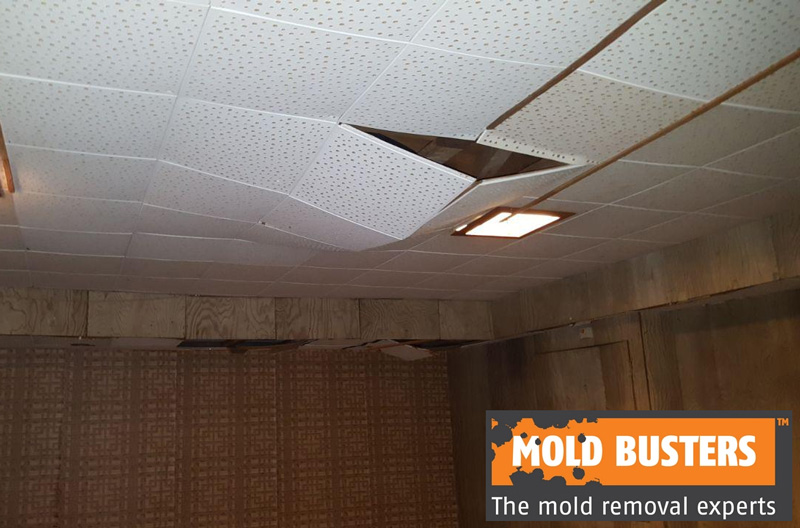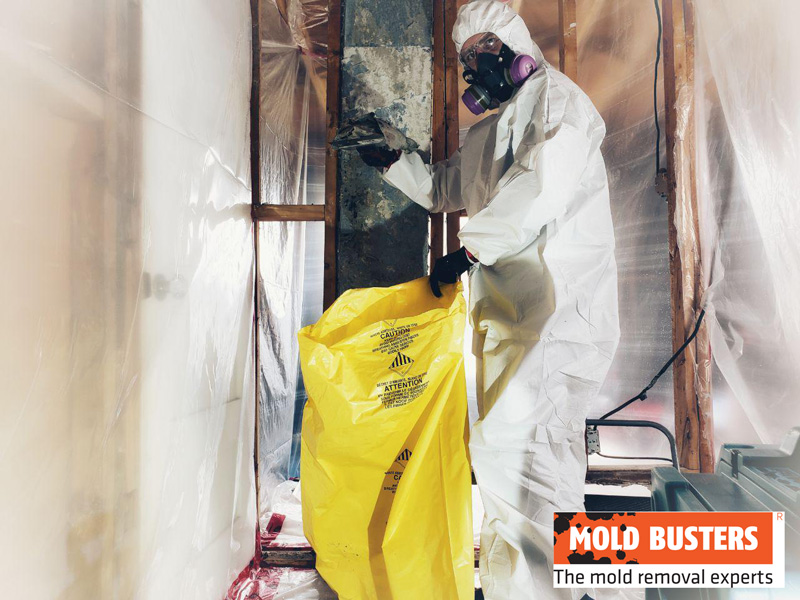Asbestos in Tiles
Asbestos was once considered a “miracle material”, used in everything from paint and pipe insulation to even tiling. However, once considerable testing proved that it was a killer, the miracle became a nightmare to deal with and remove. Informed by our years of experience in professional testing of the material, we’ll fill you in on how to safely identify and get rid of asbestos tiling for good.
Unfortunately, this miracle material poses many health risks and is still one of the leading causes of work-related illnesses to date. In order to protect your health and that of your loved ones, you should be aware of potential sources of asbestos in your home and learn how to get rid of them properly.
Why is asbestos in tiles such a big concern today?
Asbestos is a very brittle, friable (easily crumbled) material, so the slightest disturbance can cause it to break down into airborne particles that are so tiny they are invisible to the naked eye. These particles can remain suspended in the air for long periods of time and circulate in ventilation systems.
How dangerous is asbestos in tiles?
When they are inhaled, asbestos particles embed themselves in the lungs, where they cause irritation and, over time, serious chronic diseases. The human body does not know how to eliminate asbestos, so inhalation of even a small amount of asbestos can cause years of exposure. With long-term exposure, asbestos can cause a broad range of life-threatening illness, including lung cancer, mesothelioma and asbestosis.
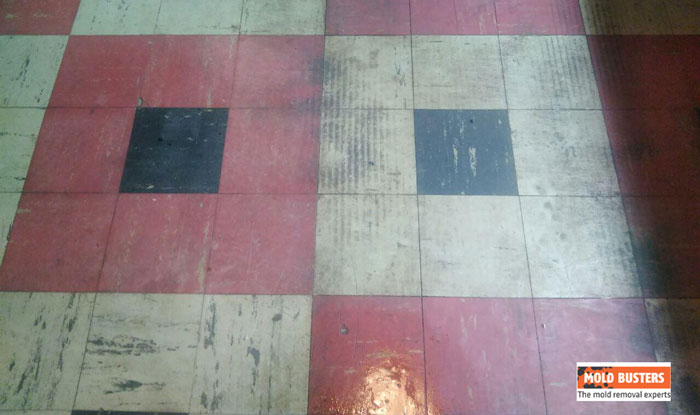
The health risks of asbestos have been common knowledge for decades, which gives many people the false impression that this problem has been dealt with. However, asbestos mining is a big industry in Canada and lobbying by the asbestos industry held back regulation for decades. This lobbying was so effective that Canada was only the 59th country to ban asbestos.
Health Canada advises Canadians that asbestos isn’t a serious risk unless it is disturbed.
However, just about every construction material in a home is disturbed at some point. Holes and scuffs from accidents, renovations, and other ordinary activities can all disturb asbestos tiles and fill the surrounding air with asbestos.
IMPORTANT: Asbestos floor tiles are especially dangerous because you walk on them every day, potentially releasing asbestos into the air with every step.
How can you tell if there is asbestos in your tiles?
It is very difficult to determine whether or not tiles in your home contain asbestos. The tiles most likely to contain asbestos are ceiling and flooring tiles.
Asbestos is used in these products for a variety of reasons.
Asbestos in ceiling tiles
In ceiling tiles, asbestos is most commonly used for reducing the amount of noise that spreads from one room to another. These sound-dampening tiles typically use asbestos with Amphibole fibres (occurring as columnar crystals), which includes Crocodilite and Amosite.
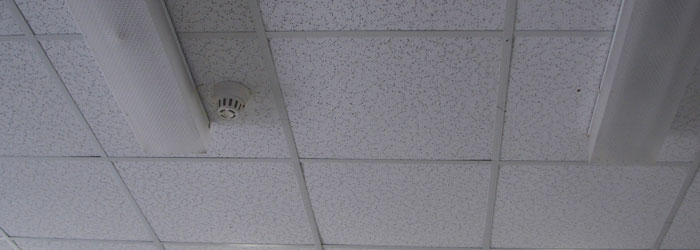
Of the two, Amosite is the most frequently used. Unfortunately, asbestos with amphibole fibres poses more severe health risks than asbestos with serpentine fibres.
Asbestos in floor tiles
In floor tiles, asbestos is used primarily for its insulation properties and its ability to resist fire. In addition to the tiles themselves, a layer of mastic (a type of adhesive) below the tiles is also likely to contain asbestos.
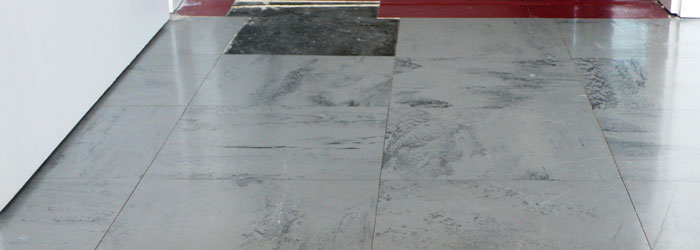
Are all 12×12″ or 9×9″ tiles with asbestos?
Manufacturers have been using asbestos for decades, so asbestos-containing tiles come in a vast array of colours, styles and sizes. Whether your tiles are 12×12″, 9×9″ or any other size, they are all equally likely to contain asbestos.
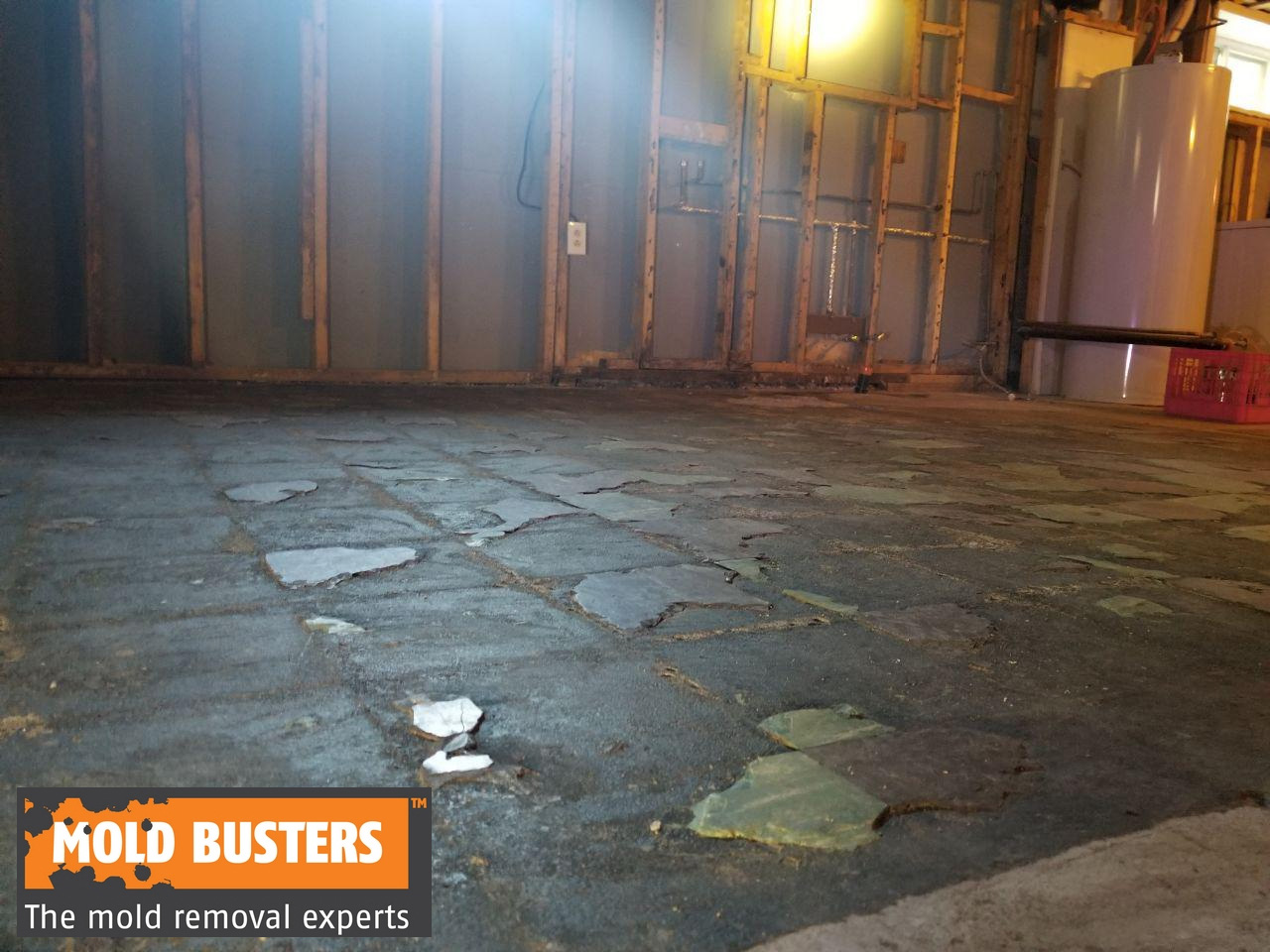
For all these reasons, it is very difficult to determine for sure whether or not ceiling or floor tiles contain asbestos.
However, here are a few ways you can identify asbestos in your tiles:
- Determine the age of your tiles: The older the tiles, the more likely they are to contain asbestos. The construction industry didn’t start phasing out asbestos materials until the 1990s, so if your house was built before then, it is safest to assume that they contain asbestos. In older homes, it is possible that asbestos tiles were removed and replaced during a home renovation or improvement project. Talk to a previous owner or (if you’re renting) the landlord and ask if the tiles contain asbestos. They may not know for sure, but they may be able to tell you the age of the tiles, which will be a good indicator. In this case, you will be depending on the previous owner or landlord to be honest, so take any response with a grain of salt and keep in mind that there are ways to determine with more certainty whether or not tiles in your home contain asbestos.
9×9 Vinyl Tile with Paper Backing - Find the brand name and product details: Some tiles are marked with identifying information, usually on the underside. You may be able to find some extra tiles left over from renovations and find product details either on the packaging or the underside of the tiles. If not, you can remove a tile and inspect the bottom for any identifying information. The tile may be marked with the brand as well as the product or style number. You can consult a product catalogue or contact the manufacturer and ask if this particular tile contains asbestos.
12×12 Acoustic Ceiling Tile - Test samples of tiles: This is the most precise (but also the most expensive) method of determining whether your tiles contain asbestos. Product information may not be visible on the tiles in question and determining the age of the tiles is often guesswork. If you have an asbestos testing professional to collect a sample of your tile and have it tested at a third-party laboratory, it can confirm with complete certainty whether or not your tiles contain asbestos.
Example photos of tiles with asbestos
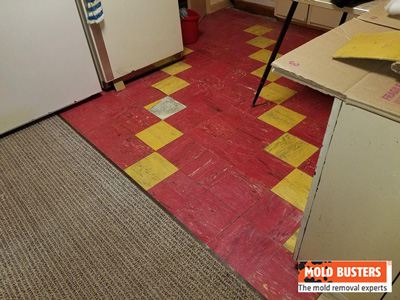
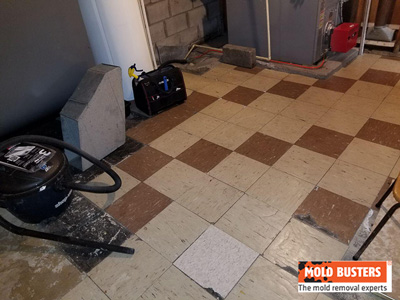
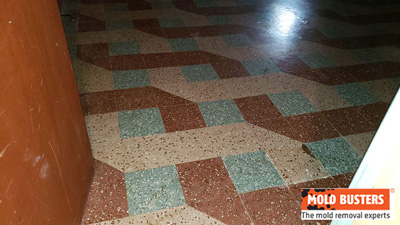
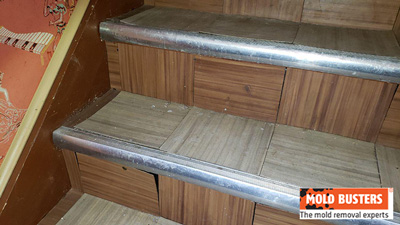
How do you get rid of tiles with asbestos?
Due to the serious risks involved, asbestos removal is a long, difficult and hazardous process. Some people tackle these projects on their own. In many communities, it is legal to remove asbestos yourself if the space in question is residential. (For asbestos removal in commercial spaces, the law requires that you hire asbestos removal professionals.)
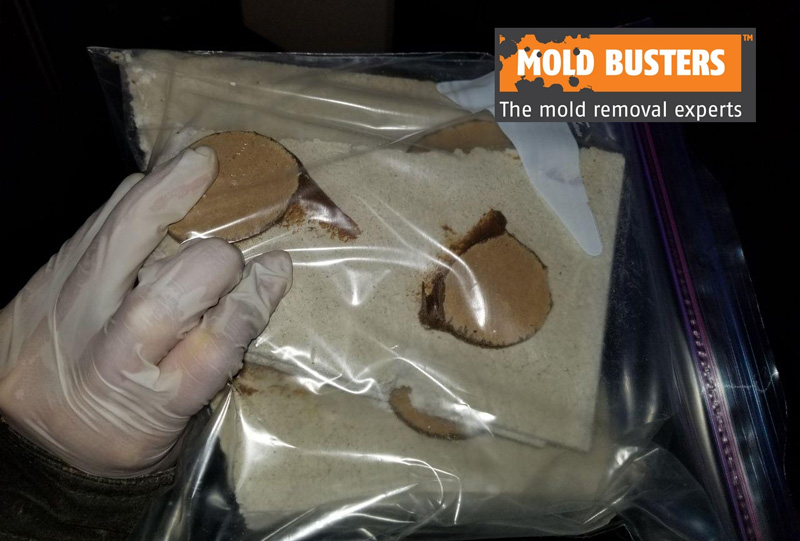
If you are interested in tackling asbestos removal on your own, be sure to take these precautions:
- Seal off affected areas: Asbestos particles spread very easily, especially during removal, when asbestos tiles will be broken. Use plastic sheets to seal off any room where asbestos will be removed. Block off ventilation ducts so asbestos particles can’t get inside and circulate through the rest of the house. Also seal off the path you will be taking on your way out of the house.
- Wear personal protective equipment: Asbestos particles are very light and volatile. Even the slightest disturbance can fill the air around you with asbestos particles, which can then get into your eyes, ears, and lungs. Even small amounts of asbestos can cause serious irritation and even lifelong disease. Protect your eyes with safety glasses that create an airtight seal around your face. Wear a respirator to filter out asbestos particles in the air. Also, wear a full-body plastic hazmat suit to prevent asbestos particles from finding a home in your clothing and releasing into the air later. When you have finished removing asbestos, discard all protective equipment in sealed garbage bags.
- Remove asbestos-containing material carefully: It is impossible to remove asbestos tiles intact. In order to remove them safely, you must break every tile into dozens of pieces. Remember that breaking asbestos tiles poses a serious risk of releasing asbestos fibres into the air and having them spread to other rooms in your house. Once you have removed the tiles, place all asbestos-containing material into sealed plastic garbage bags and deposit these bags in a safe location outside where the bags won’t be damaged.
- Hire a waste disposal company: Removing asbestos tiles from your home is only half the battle. Once they are out of your house, you will need to have them removed from your property by a waste management company that handles hazardous materials. These services are rare and expensive, so be ready to spend time researching a company and spend a lot of money for removal—unless you want to turn your backyard into a dump for hazardous materials.
As you can see, conducting asbestos tiles removal yourself is very difficult and time-consuming. Unless the amount of asbestos-containing products is very small, you are better off hiring asbestos-removal professionals who will take care of every step of the asbestos abatement process for you. The most important step is they will test and tell you if you have asbestos in tiles at all.
Conclusion
Asbestos is ubiquitous in Canada, largely due to its popularity for construction and lax regulation. Even though asbestos is now banned, this doesn’t mean it has been eliminated from our lives. The asbestos ban only applies to new products, so millions of products that have been accumulating in our homes and places of business for decades are still there.
To avoid the health risks of asbestos exposure, you need to have your home inspected by professionals. If any asbestos is discovered, you should hire qualified professionals to safely remove any and all asbestos-containing materials.
